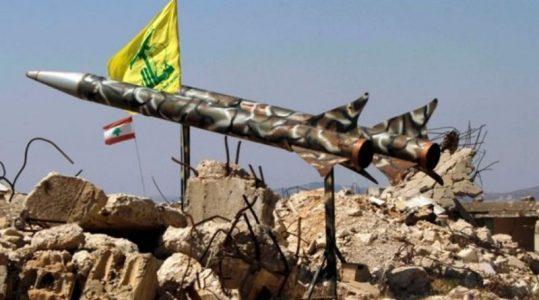
Hezbollah’s missile factories put civilians at risk
Speaking at the UN General Assembly on September 27, Israeli prime minister Binyamin Netanyahu accused Hezbollah of building missile production sites in the Ouzai neighborhood of Beirut. The group reportedly intends these underground facilities—located in the middle of an urban area near mosques, homes, schools, and the international airport—to convert regular missiles into more accurate precision weapons. It is unclear whether they are already operational or not.
Israel has repeatedly made clear that it cannot allow Hezbollah to produce new missile variants or upgrade its existing stockpile domestically. Yet the group continues to pursue that very goal, placing Lebanese lives and property at tremendous risk in the process.
Within minutes of Netanyahu’s speech, the Israeli military released video and photos of three Beirut sites reportedly established to improve the precision of Hezbollah’s missiles—a goal that the prime minister tied directly to Iran. His UN revelation is by no means the first time Israel has signaled that it is closely tracking such efforts.
When Netanyahu met with Russian president Vladimir Putin in Moscow this January, the two discussed the missile facilities Hezbollah was building in Lebanon. At the time, Netanyahu warned that the country was “becoming a factory for precision-guided missiles that threaten Israel.”
Then in May, while hosting a meeting of his foreign counterparts, Israeli Air Force chief Maj. Gen. Amikam Norkin displayed a photo of an F-35 stealth fighter flying over Beirut in broad daylight. The implications of this show of force were twofold: that Israel could hit targets in Beirut at will, and that there were targets in the capital it felt may need hitting. Netanyahu made this threat explicit when he showed aerial photos of the Beirut missile sites at the UN, warning, “Israel knows what you are doing. Israel knows where you are doing it. And Israel will not let you get away with it.”
Speaking at a counterterrorism conference in early September, former Mossad deputy chief Naftali Granot noted that Hezbollah had “recently received small numbers of GPS precision-guided systems that will help it to convert some heavy rockets into accurate missiles.” Later that month, Israeli airstrikes in Syria reportedly targeted specialized machinery for producing precision missiles, which at the time was en route to Hezbollah. Those strikes spurred Syrian air defense units to fire a flurry of ill-aimed missiles, mistakenly downing a Russian military plane and thereby raising the stakes of Israel’s air operations against the group’s strategic weapons.
The Beirut revelation is not the first time Hezbollah has been caught using Lebanese civilians as human shields for weapons or production facilities. In July 2017, for example, Israel released aerial photos of southern village locations where the group had built a rocket factory and arms warehouse. One of the structures was located about 110 meters from a pair of mosques. The IDF reported at the time that Hezbollah routinely places rocket launch sites and other firing positions in the middle of populated areas, along with “a network of underground tunnels beneath civilian homes and structures to allow its fighters to move freely between posts.”
Likewise, the group often placed military infrastructure near civilians during the 2006 Lebanon war. In the southern Shia village of Qana, for instance, photographs from the conflict showed an arms warehouse directly across the street from a mosque. And about thirty squads of Hezbollah fighters operated in the village of Aita al-Shab, many based inside houses.
The group understands how dangerous this tactic is to their countrymen. In fact, it deliberately used sensitive civilian sites as military facilities during the 2006 war with the understanding that they would be attacked, apparently believing that this would increase the difficulty of Israeli operations in southern Lebanon. When detained Hezbollah soldier Muhammad Abd al-Hamid Srour was asked afterward if he knew that firing a missile at an Israeli tank from a civilian house would lead to the home’s destruction, he replied that firing was still “in the general Islamic interest,” and “that if the house was destroyed, it would simply be rebuilt after the war.” His claim that all homes were supposed to be evacuated before the fighting began seems like dubious comfort to those affected, even if true.
This mindset helps explain why the group’s efforts to establish arms production infrastructure inside Lebanon appear to have stepped up in the years since that destructive war. In July 2017, the French magazine Intelligence Online published information confirming that Hezbollah was building two new domestic weapons factories: one near the northern town of Hermel to produce longer-range Fateh-110 missiles, and another between the southern coastal towns of Sidon and Tyre to produce smaller munitions.
Earlier that year, the Kuwaiti newspaper Al Jarida reported that Iran had established multiple facilities fifty meters below ground and protected them from Israeli bombardment with multiple layers of defenses, citing an unnamed deputy head of the Islamic Revolutionary Guard Corps.
Source: WI





